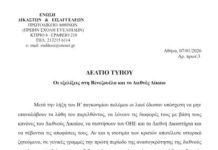By Jean Shaoul
4 October 2018
Thousands of Palestinians converged on Khan al-Ahmar in the occupied West Bank Monday, in a bid to save the Bedouin village, home to 180 people of the Jahalin tribe, from demolition by the Israeli authorities.
The rally was part of a general strike and protest against Israel’s suppression of the Palestinians, including its apartheid-style nationality law that defines Israel as a Jewish state and grants nationality rights to its Jewish but not its Palestinian citizens.
Palestinian factories, shops, schools and offices in Israel, East Jerusalem, the West Bank and Gaza closed, bringing thousands on to the streets and blocking traffic. It was one of the first strikes involving both the Palestinian-majority areas of Israel in the Galilee, Triangle and Negev regions as well as the Occupied Territories.
Last week, Israel’s Civil Administration served a notice on Khan al-Ahmar’s residents, who make a living out of raising sheep and goats, demanding they evacuate their village by October 1 or face demolition and forced displacement. On Friday, Israel’s security forces declared Khan al-Ahmar a closed military zone to prevent Palestinians, international activists and reporters from exiting or entering the village.
Khan al-Ahmar is located in the E1 bloc, the name given to the area between Jerusalem and the West Bank settlement of Ma’ale Adumim. Its demolition is part of Israel’s broader strategy of separating East Jerusalem, which Israel annexed illegally after its seizure from Jordan in the June 1967 war, from the West Bank. The plan is to cleanse the area of its Palestinian residents, expand the settlements and bisect the West Bank in defiance of international law and countless UN resolutions.
The village is one of the small Palestinian Bedouin communities in the West Bank, scattered around the road between East Jerusalem and Jericho that the Israeli authorities have sought to drive out by making it impossible for them to maintain their pastoral lifestyle. They have been refused permission to connect to water, electricity or sanitation systems or to pave the roads, and their pastureland has been restricted. As a result, the villagers have little access to health, education and welfare services and lack the most basic utilities.
The villagers have fought a protracted battle since 2010 to maintain their homes—consisting of makeshift tin and wood shacks built on a desert hillside—in the face of Israeli threats to remove them. Originally from Tel Arad in the Negev desert, from where they were expelled by the Israeli army in the 1950s, they leased land for residential purposes and for herding on the site of what is now the settlement of Kfar Adumim, from which they were expelled before moving to Khan al-Ahmar.
Israel again justified the demolition of their homes with its well-worn refrain that the Bedouin village is illegal because the residents do not have a permit to build homes—a catch-22 situation since Israel rarely if ever grants permits to Palestinians to build houses or extend their homes, forcing them to build without permits.
According to data obtained under freedom of information by Peace Now, Israel has allocated just 400 acres of “public land” for use by Palestinians, with more than 99 percent of the land approvals going to help Israeli settlements.
Over the last 12 years, the authorities have already demolished 26 homes in the community, making 132 people homeless, 77 of them children and teenagers, and seven non-residential structures.
In May, the Supreme Court rejected the residents’ petitions against the demolition of their homes and their transfer to West Jahalin, near the garbage dump in Abu Dis, empowering the state to remove them. Abu Dis, a Palestinian village near Jerusalem, is believed to be what the Trump administration is offering the Palestinians as the capital of some future Palestinian state.
In July, the authorities sent in heavy construction equipment with a police escort in readiness for the demolition of the Khan al-Ahmar homes and the expulsion of its residents. When protests broke out, the police made several arrests.
In further legal proceedings in August, it emerged that the authorities would consider moving the residents at some future date to a new site in the desert, south-west of Jericho, provided that the residents of three neighbouring communities also relocated with them—doubling the number of Bedouin villagers to be expelled—and all agreed to sign affidavits that they would move.
The new site is just a few hundred metres from a sewage treatment plant and the construction of access roads to it would mean taking Palestinian land, highlighting the utter contempt Israel has for the Palestinians. Israel’s policies are ethnic cleansing in support of the government’s Greater Israel project and the expansion of the settlements, a policy not dissimilar to Germany’s policy of settler colonialism from the 1890s to the 1940s, known as lebensraum .
Nevertheless, on September 5, the High Court—presided over by the same three judges that had earlier rejected the residents’ petitions—accepted the government’s proposals as good coin and nodded through the forced transfer of the villagers and the demolition of their homes. In so doing, it gave its imprimatur to a war crime.
The evacuation of Khan al-Ahmar and neighbouring communities will enable Greater Jerusalem to be surrounded by the Security Wall, split the West Bank in two, making it impossible to establish a Palestine statelet, and expand the number of settlers in Area C. Crucially, it is also key to the control over Areas A and B, as Area C is richly endowed with natural resources, including water and most of the West Bank’s agricultural and grazing land, and shares its border with Jordan.
Under the Oslo Accords, the West Bank was divided into three administrative areas, A, B and C, each with a different administrative status, pending a final negotiated agreement. Areas A and B were delineated in such a way as to contain only Palestinians, while Area C was defined as all the rest. Area A comprises approximately 18 percent of the West Bank and Area B about 22 percent, and together are home to some 2.8 million Palestinians. Area C, around 60 percent of the West Bank, includes the settlements, outposts, declared “state land,” the Palestinian part of the Dead Sea, and thus its mineral wealth.
In May 2014, Uri Ariel, Israel’s housing minister and resident of the West Bank settlement of Kfar Adumim, estimated the settler population as 400,000 in the West Bank and 350,000 in East Jerusalem, a number that has certainly increased since then. A settlement near Khan al-Ahmar has plans for expansion. The settler population exceeds the 300,000 Palestinians that live in Area C.
Thus, the expulsion of the villagers is about much more than Khan al-Ahmar. The ever-increasing settlements in Area C involves the impoverishment of the Palestinians in Areas A and B, to the extent that they too, like Gaza, become uninhabitable.
The Trump administration has remained silent on the issue, while the European Parliament formally condemned Israel’s plans for Khan al-Ahmar, warning that it would be committing a war crime. It called for monetary compensation for financial losses should the village be demolished, making clear it knew the protest would go unheeded. An EU spokesperson said it would end any chance of a two-state solution in the West Bank and Gaza Strip, with East Jerusalem as its capital, which is of course the aim of the Netanyahu government.











